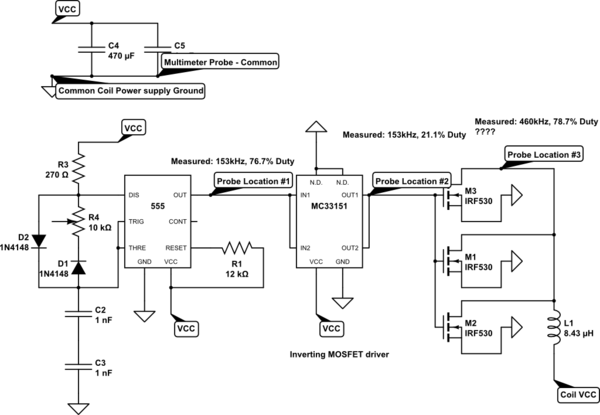Since you do not show your scope traces, it is difficult to know exactly what you mean by "an altogether different frequency". Most likely, though, is that as Adam Lawrence suggests, you are getting ringing on the load. Multimeter frequency measurement for anything other than simple sine waves is a dangerous business, and I suspect that your meter is doing a bad job.
Instead of using the meter, do two things. First, drop your switching frequency way down, to something like 100 Hz. Now hook your scope to location 1 and location 3, and display both channels simultaneously. You should see a pulse train at location 1, and a sort of similar trace at location 3. Location 3 should have a more-or-less pulse train, except that, when the voltage goes high you should see a rather high-voltage damped sine wave. And note that the voltage can be well above the rating of your FETs, which is why you should listen to Kevin White and install a flyback diode across your load.
EDIT - As Dave Tweed pointed out, I missed the fact that you're trying to excite a Tesla coil. This makes life a bit more difficult. The above procedure will allow you to see why the output doesn't look like the input, but it won't drive the coil successfully. END EDIT


